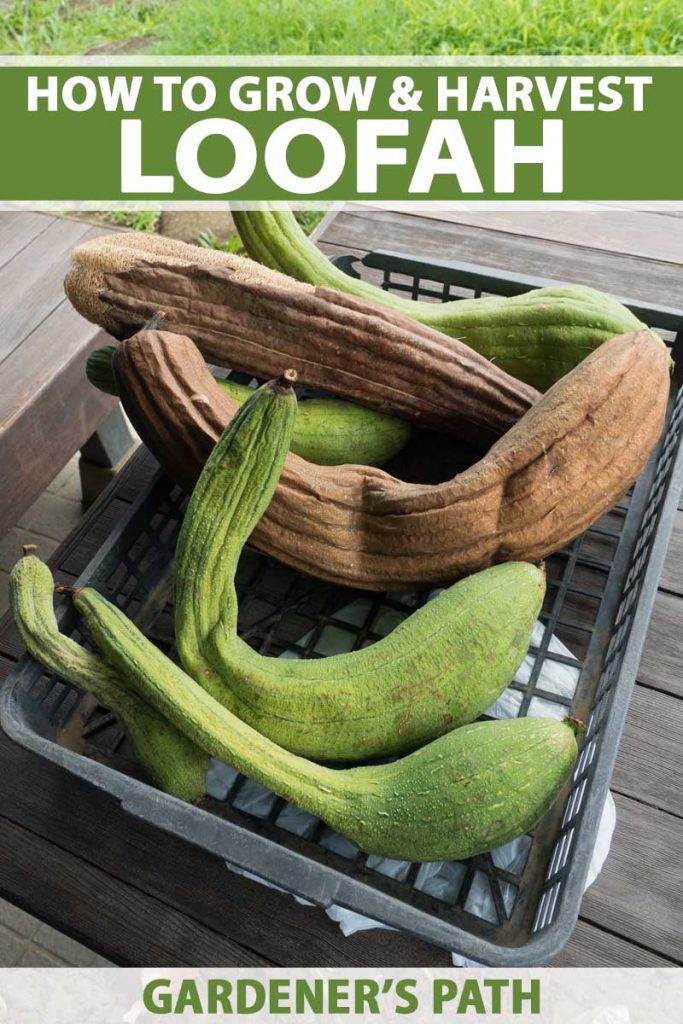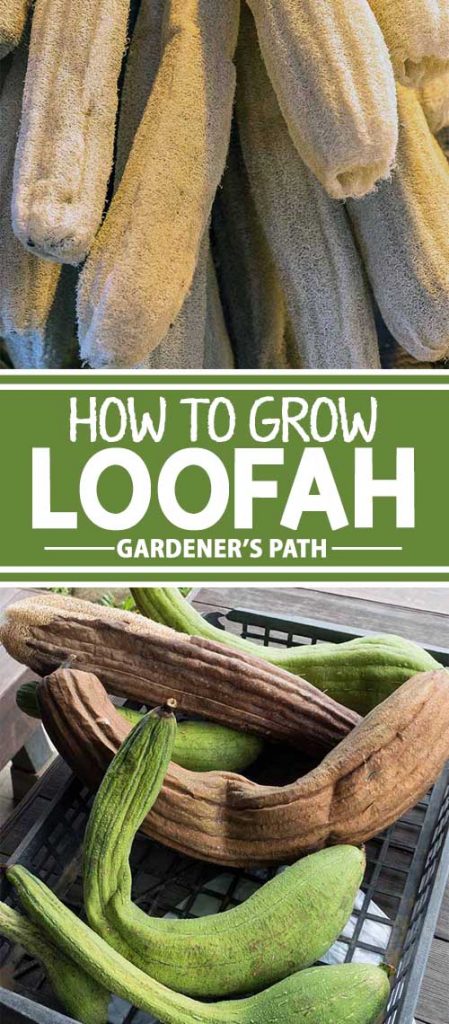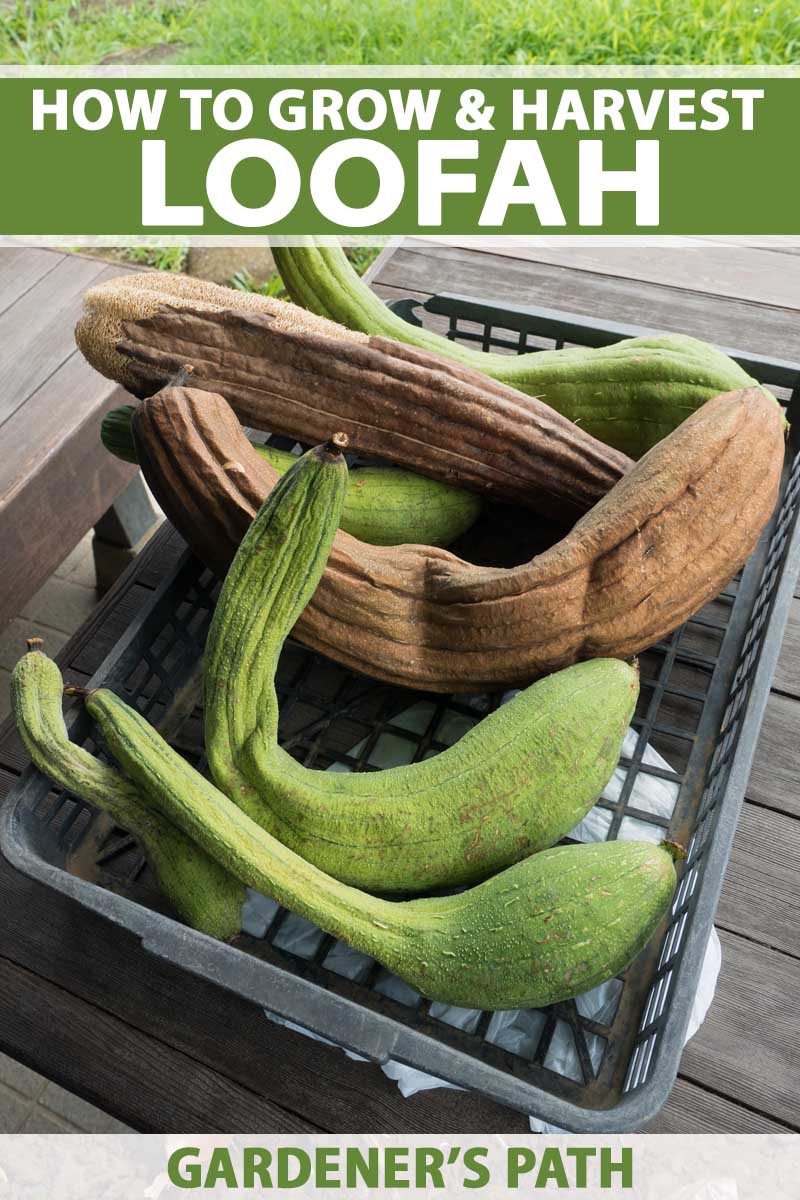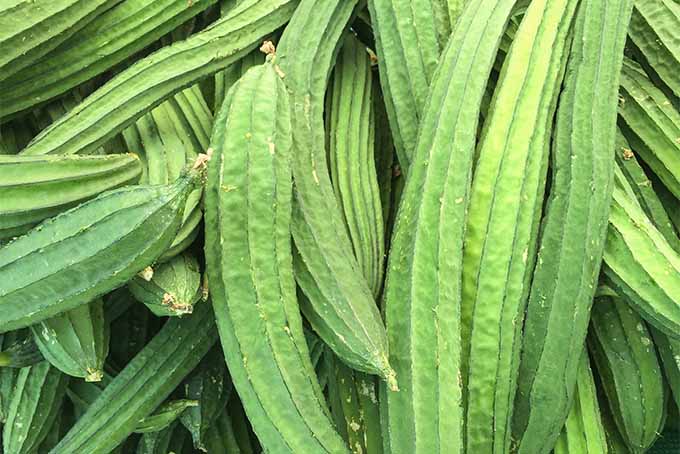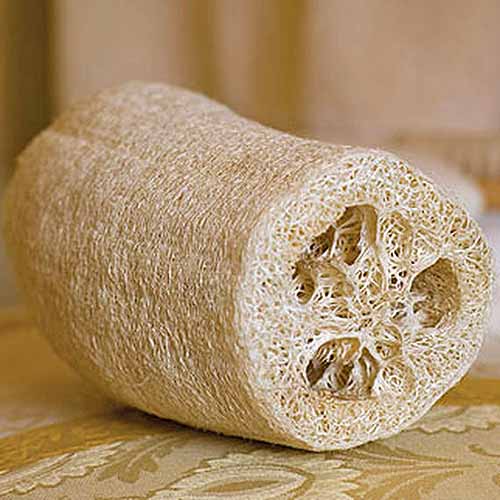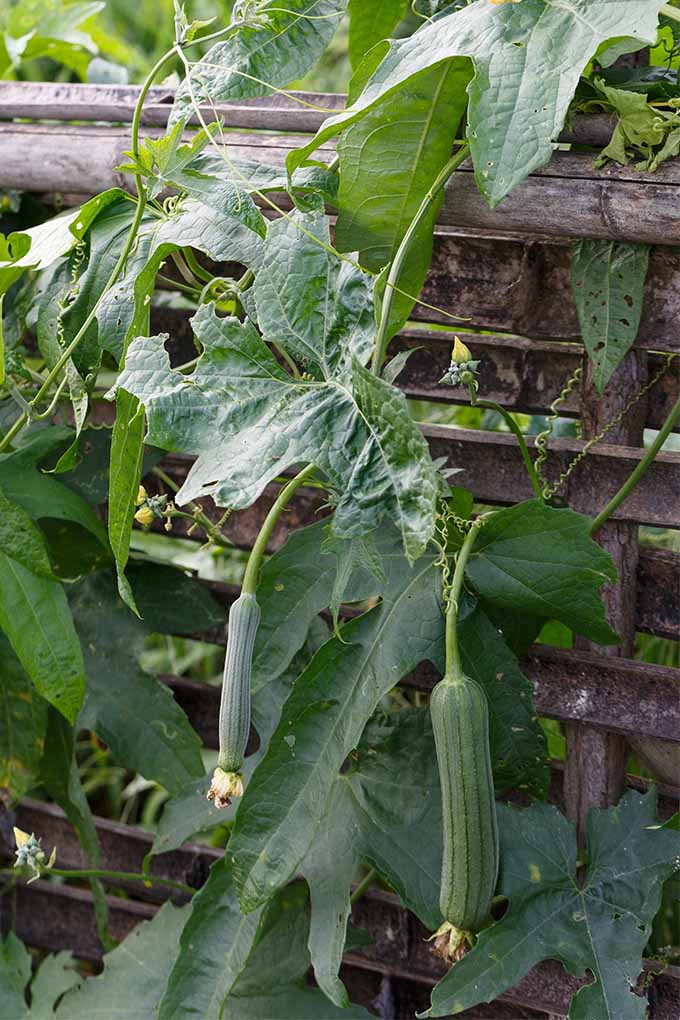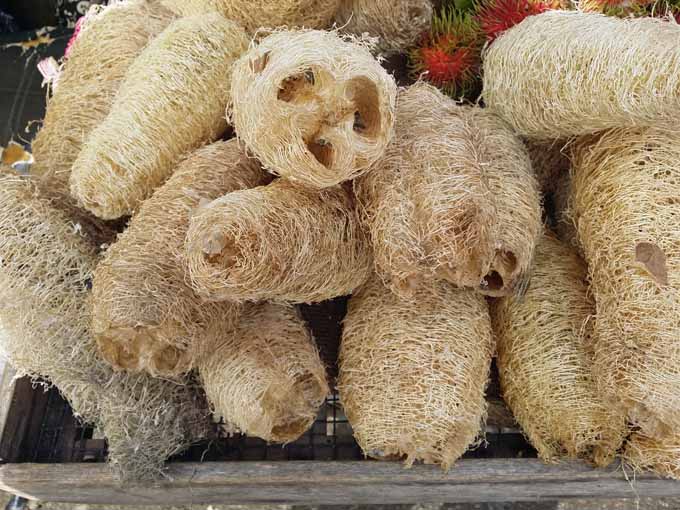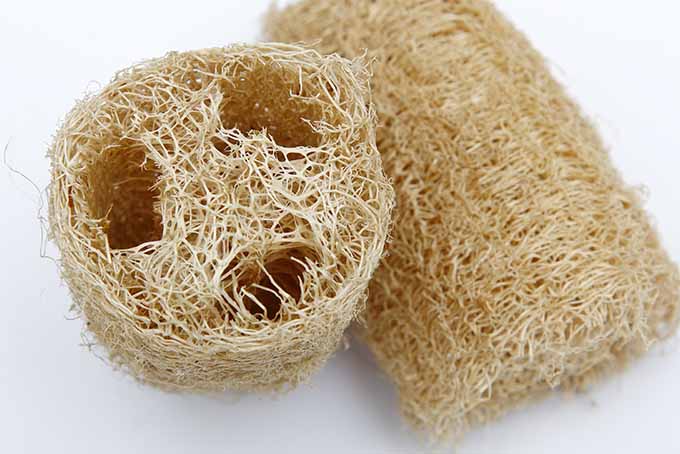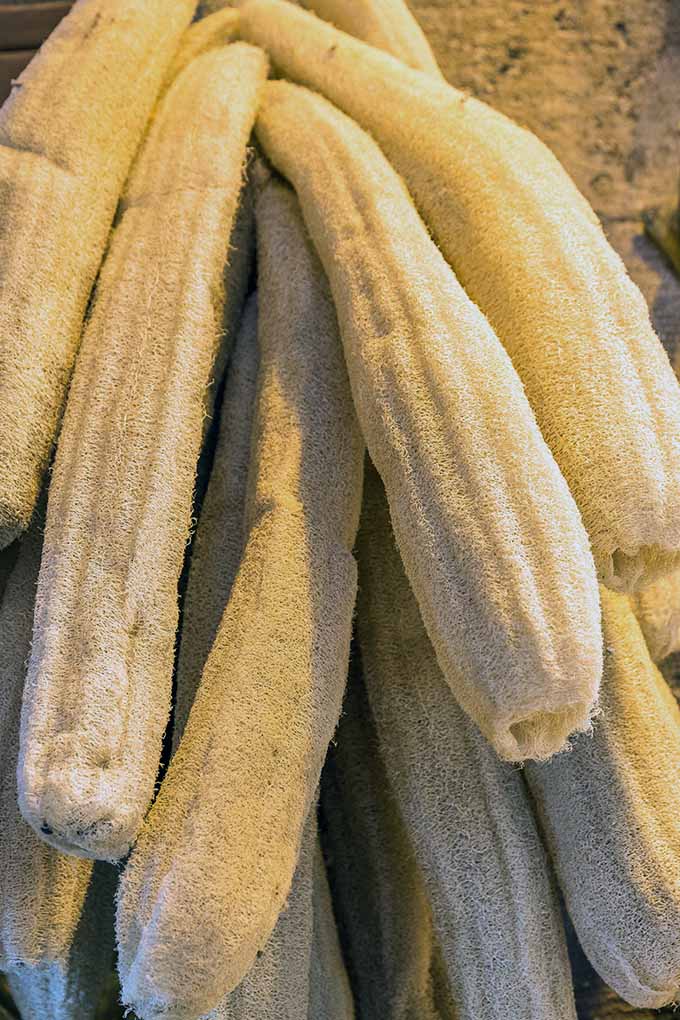We used a loofah sponge, and it wasn’t until I was a grownup that I realized we grew these in our backyard garden! Loofahs on the market today are sometimes synthetic, meaning they are not made from the gourd plant that these were originally modeled after. We link to vendors to help you find relevant products. If you buy from one of our links, we may earn a commission. Loofahs obtained naturally from the garden can be of many sizes and shapes, and are great for several household uses beyond washing up in the tub.
Finding Luffah Varieties
First, note that loofah, can be spelled many ways, among them: luffah, luffa, loufa, and even just luff.
Planting Sponges in Your Garden
In the spring, when the danger of a hard frost has passed, plant the seeds in the same manner you would any squash, pumpkin, or melon.
Heirloom Luffa Seeds Heirloom luffa seeds are available from Burpee in packets of 25 seeds. These can be harvested young to enjoy at a vegetable, or allowed to grow on the vine for ornamental use as sponges until they reach about 7 inches in length. Some cultivars are more elongated and skinny than others. Choose a well-rated variety from a seller that has shown success with their harvests. Make several hills, about a foot apart, along a fence or other climbing surface. These plants love to grow upward and wrap around anything near them. Giving them a place to hang will help them keep the fruits from spoiling closer to harvest season.
You can plant two seeds in every hill if you’d like to increase your odds of ensuring that one plant will grow. When each seedling has grown to about two inches tall, thin to a single plant per hill. Luffa gourds need to be kept adequately watered, and they really like sun.
Special Treatment
If you’ve had experience removing the first flowers and the male flowers of other plant breeds, you may choose to implement this technique with the loofah. Otherwise, I’ve found it to be best to just leave it alone, as this practice tends to damage vines. I also treat my luffah plants to a regular dusting of diatomaceous earth in the late summer and early fall, when squash beetles are most dangerous.
You will want to keep an eye on any “strangled” gourds that may become entrapped in the climbing fence. When the luffah fruits are small, be sure that they are on just one side of the fence. Many will try to poke through fence gaps and grow on both sides of the boundary at once, resulting in deformed fruit that cannot be harvested later.
Harvest Timing is Everything
Picking the loofah is similar to the method for harvesting any other squash or melon. You will want to pinch or cut the fruit off at the vine, leaving the plant in good shape for any other gourds that need to finish ripening. Knowing just when to harvest, however, is a bit of a challenge. Loofah is an edible plant, so you can harvest young and eat them in the same manner you would a young zucchini or summer squash.
They are fickle plant in terms of taste, going from tender to terrible in a manner of weeks. For this reason, many choose to use them for their unique main purpose, allowing them to stay on the vine for a late summer or early fall harvest. These growers are interested in the sponge, of course! If you know that frost is coming soon, you must pick. Even slightly unripe loofahs can be used, although they may be smaller in size. Otherwise, when the fruit feels very light, and the skin has become dry and dark in color, it’s ready to harvest.
Preparing the Sponge
Now comes the unique task of turning gourd into sponge. I find the loofah to be a smelly gourd, so you will want to do this work outside, on a garden table or patio. You’ll need:
A large stone or rolling pin Bucket of warm water with a teaspoon of bleach Scissors or pruning shears
Start by laying the luffah on a flat, solid surface. Strike it with the rolling pin or stone, knocking off as much of the dried outer skin as you can. You may also see some seeds come loose during this process – this is a good thing! Any stubborn skin fragments can be peeled off with your fingers or cut away gently with the shears. I personally find the skins to be tough for my arthritic hands to peel, so the shears are nice to have. The riper the gourd, the easier it will be to peel. If you had to pick some immature gourds, you’ll find the skin harder to remove. For these, cutting one end off with the shears and peeling like a banana may be your best strategy.
Once the skin and seeds are gone, you’ll find a coarse, fibrous material inside. It should be yellowing, brown, or even black. You can soak the dark and somewhat unappealing loofahs so that they appear more fresh and clean, if you wish. A quick bath in a solution of bleach water (one teaspoon bleach to a gallon of water) for a few minutes will do. Rinse the gourds by spraying with a high-pressure hose. You may also wash them in soapy water. All of the seeds, and any rotten material or signs of mold should be removed completely. Allow the gourds to dry in the sun over the course of a day on a towel spread out on your garden table. Turn regularly to dry evenly, and get rid of all the moisture. Once completely dry, you can store luffah sponges anywhere in your home that is dry and free from pests.
Additional Uses
In addition to making a great bath time exfoliator, they are effective at washing up around the house. These homegrown sponges work wonders on grout, make a scratch-free option for cleaning delicate porcelain, and even help to remove grass stains when used with your favorite laundry pre-treater. I’m especially fond of how they take grime off my cast iron pans!
The same loofah can be used over and over, provided you keep it clean after each use and allow it to dry. You may hang it in a mesh lingerie bag on the clothesline or put it in your dish drainer between uses. One harvest will last an entire year until the next fall’s crop comes in!
Odd Gourd Produces Fantastic Results
Growing loofah is a somewhat lost art that I’d love to see make a comeback in gardens everywhere! They are a basic gourd, with the same needs as most decorative vines, but with the added benefit of a tasty young fruit.
With just a two or three plants a year, you can also equip your home and vanity with durable, sustainable cleaning and grooming tools that put their synthetic counterparts to shame! This sponge also makes a special gift. Many gardeners have found success selling them at farmer’s markets, craft shows, and online at sites like ebay and Etsy! Have you ever grown luffa? What ways can you think to use this miracle gourd? I’d love to hear your stories, especially how you’ve successfully removed the stubborn seeds and skin! And if your enjoy gourds like we do, you’ll love some of our other guides:
Grow Your Own Birdhouses with These Decorative Gourds How to Plant and Grow Ornamental and Hardshell Gourds 7 of the Best Ornamental Gourd Varieties
© Ask the Experts, LLC. ALL RIGHTS RESERVED. See our TOS for more details. Originally published February 15, 2019. [lastupdated]. Photo credit: Shutterstock.
